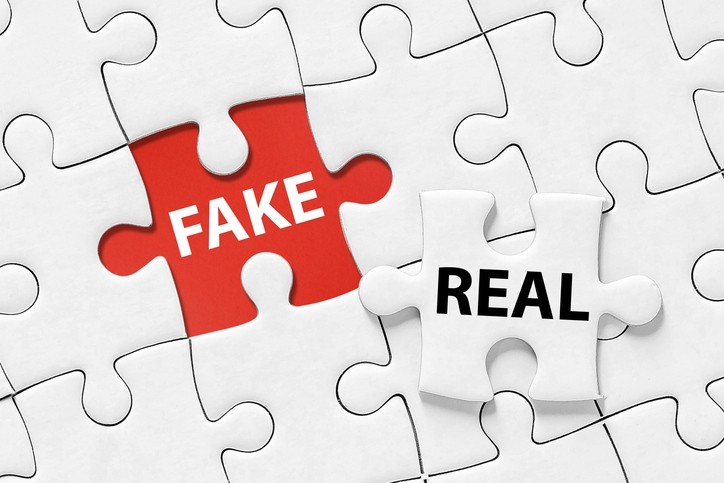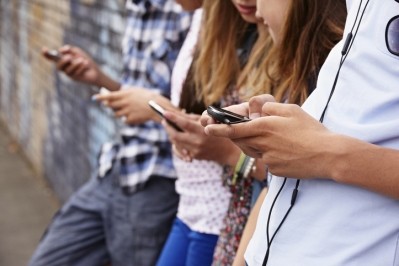Fake alcohol: Can alcohol brands ever win the battle against counterfeit goods?

This month, Food Standards Scotland has issued urgent warnings about counterfeit 35cl bottles of Glen’s Vodka sold in small stores in Glasgow, which tests have shown contain the industrial solvent isopropyl - a chemical that can prove to be fatal in larger amounts. It’s shown just how dangerous the problem can be.
What is the industry doing to fight counterfeit goods - and what actions can individual manufacturers take to protect their brands?
A threat to human health
The problem of fake, illicit and counterfeit alcohol is a big one: but – due to its clandestine nature - hard to measure.
Estimates suggest that some 26% of alcohol consumption comes from illicit goods, according to stats from Euromonitor: with that figure much higher in some markets than other (in India – a market where illicit alcohol is a particular problem – this is estimated at 46%).
The first and by far the biggest problem with illicit alcohol is the danger to human health.
As the case of counterfeit Glen’s vodka using industrial solvent shows, the liquid within can pose a very real threat to human health (isopropyl can prove fatal if ingested in larger amounts).
A recent incident of 'bootleg alcohol' being a case in South India in June cost 56 lives.
The driver of fake alcohol sales is, of course, money: with illicit goods enticing consumers with a cheaper price-tag than the real deal.
This means governments take a big hit from a loss of taxation revenue.
But the knock-on effects go further than that.
The world alcohol market is forecast to top USD 2.2 trillion in 2025. That, says Phil Lewis, Director of the Anti-Counterfeiting Group – makes it a ‘highly attractive business sector’ for transnational organised criminal networks.
Fake, counterfeit and illicit alcohol
Illicit alcohol refers to any unrecorded alcohol that is produced without regulatory oversight or taxation.
Counterfeit alcohol specifically refers to products that pass themselves off as well-known brands: essentially infringing intellectual property. It also refers to brands that claim a Geographical Indicator they have no right to.
“Illicit alcohol products are comparatively easy to produce and the cost of producing fake alcohol products can be relatively low in small scale operations, which means that the market is open to small and large-scale criminal gangs,” he explained.
“As with all forms of counterfeiting, criminals producing fake alcohol run their operations with a view to minimizing costs and deceiving buyers.
"This results in the use of cheap ingredients and contaminants, which can be highly toxic.
"The use of methanol, ethanol and other aversive liquids clearly endanger consumer health and safety and greatly increase the risk of fatalities.
“The Organisation for Economic Development (OECD) has reported that ethanol as a component in illicit alcohol could be responsible for approximately 750,000 to 800,000 deaths per year.
"In addition to the danger to life with counterfeit alcohol, the large profits that are made are used to “seed fund” other insidious forms of transnational illicit trade including people, weapons and drugs.
"In addition, losses to the exchequer are vast – criminals do not build schools and hospitals.”
What can be done?
It's a fight that's forever evolving: as counterfeit goods become more sophisticated, so does the technology that can be used against them.
The World Spirits Alliance makes three key recommendations for governments and other stakeholders to take to tackle illicit trade.
The first is to support and improve framework conditions for legal alcohol. Reducing barriers, restrictions and excessive taxes for legitimate goods can help reduce the price differences between genuine and illicit goods – and reduce incentives to produce illicit alcohol
The second is to punish and prevent illicit trade through robust controls and enforcement. That means ensuring robust enforcement of existing rules and regulations and increasing controls and penalties. It also includes setting up anti-counterfeiting agencies where they do not exist and co-ordinate multi-agency action, and create more business-to-government co-operation.
And thirdly, raising awareness form the general public about the prevalence, dangers and forms of illicit alcohol will help reduce the dangers and bring in more eyes to identify and report illicit goods.
In July this year, the European Anti-Fraud Office (OLAF) dismantled a smuggling conspiracy involving counterfeit vodka and whisky masqueraded as premium brands. The operation resulted in the seizure of almost 400 thousand bottles of premium vodka, with an estimated street value of €14m.
Hong Kong customs recently seized its largest haul of counterfeit liquor in twenty years, where more than 1,300 bottles of fake brand-name spirits were seized, with an estimated value of $2m.
In Europe, counterfeit alcohol is an issue industry association spiritsEUROPE is constantly working on. And the key to all of its efforts is collaboration and knowledge sharing, says Pauline Bastidon, director for Trade & Economic Affairs at spiritsEUROPE.
“Our members are working closely with enforcement officials wherever possible to share intelligence on the latest illicit trends and help them detect illegitimate products," she told us.
"Several of our sister associations and members around the world provide training to officials, raising awareness of best practices that could be considered, as well as the risks stemming from illicit alcohol. Our sector is always ready to develop more partnerships – both with enforcement officials and other actors in the chain, such as online platforms – to help fight illicit trade.
"In parallel, we campaign for robust controls & penalties for criminals engaging in illicit trade, as well as greater cross-administration joined-up thinking and closer cooperation with the private sector."
However, she also highlights the most effective projects will be ones that understand why counterfeit products come onto the market in the first place.
"We also need more efforts to look at the root causes behind illicit trade & how to address these, if we want to tackle the problem in a more efficient way,” she said.
The US: Double protection against counterfeit goods thanks to TTB and three-tier distribution system
In the US, federal and state regulators, such as the Tax and Trade Bureau (TTB), Food and Drug Administration (FDA), and Bureau of Alcohol Tobacco and Firearms (ATF), are tasked with ensuring counterfeit and adulterated products do not enter the marketplace.
The US' unique 'three-tier' distribution system for alcohol also adds another layer of protection, because products must travel from one verified body to another and there are checks and balances all along the chain.
"Alcohol is one of the most highly regulated products in the U.S., subject to extensive federal and state regulatory schemes that govern its safety and production standards and require all spirits to go through the three-tier distribution system that creates a chain of custody," explained Courtney Armour, Distilled Spirits Council Chief Legal Officer.
"The documented instances of counterfeit alcohol in the U.S. over the last several decades have all related to after-market illegal activities, such as bars refilling branded bottles with inferior product and consumers selling refilled premium bottles through social media and online message boards. In these instances, law enforcement and state spirits regulators have taken action against any violators."
The TTB takes a strong stance against counterfeit and illegal goods.
"Federal law prohibits the production and sale of spirits without a permit issued by TTB and TTB thoroughly investigates cases of illegal sale, production, and distribution of alcohol beverages, including moonshine, counterfeit, and refilled products," said Armour.
"TTB also responds to and investigates complaints made by consumers regarding alcohol beverage products that are typically related to the quality of products.
"All tiers in the industry do have some role to play to ensure counterfeit products do not enter the marketplace.
"All parties need to act within legal and ethical boundaries and contract with reputable companies that will ensure product integrity is maintained throughout the eventual route to market."
How can manufacturers protect their brand?
But at an individual businesses level, counterfeit alcohol still poses a real headache. If a counterfeiter chooses to imitate a brand, that poses multiple threats: such as a loss of sales and revenue for the genuine product against the cheaper counterfeit ones.
But the biggest worry is the damage to reputation. And to add insult to injury, manufacturers often feel powerless against an invisible enemy while they are forced to invest time and resources in reputation protection rather than investing in innovation or production.
So what can be done?
Actions start with practical methods to protect individual goods. Traceability information is already recorded via batch (lots), usually printed on bottles during production. Manufacturers can also add hidden codes to their products.
But it’s possible for these lot or batch codes to be tampered with. Unscrupulous importers might want to remove them to avoid possible recalls; counterfeiters may source genuine bottles, erase batch codes to hide the source, then refill them with counterfeit beverages.
The best traceability mechanisms are those that can only be affixed by the manufacturer and brand owner.
Taking this idea of traceability to the next level is the advances made by technology. That includes RFID tags and blockchain technology.
Then there's also the potential of technology in authenticating individual beverages: ranging from hologram stickers and tax stamps to tamper proof seals and tamper-proof features.
Courtney Armour, of the Distilled Spirits Council in the US, says technological solutions are providing the ability to track and monitor inventory through and across the marketplace - and identify issues when they arise.
"While individual companies often do not have much recourse once the product has left the original chain of custody, suppliers and researchers are working to innovate technological and scientific solutions, such as near infrared spectroscopy and ultra-violet visible spectroscopy, to identify genuine product and reduce the potential for after-market tampering or counterfeit activities," she explained.
"Third-party companies in the industry are also innovating product tracking solutions that can help trace the bottle as it travels around the world, such as QR code technologies and smart packaging components like anti-tamper bottle closures that utilize blockchain and Near Field Communication (NFC) tags."
Kristi Browne, COO at anti-counterfeiting solutions company Authentix, a company that works with manufacturers and organizations such as Anti-Counterfeiting Group and the Alliance Against Counterfeit Spirits to create the most effective technologies, says that these technologies can then be used to create an effective strategy against counterfeiters. A bonus addition is the insight manufacturers gain about the products and consumers along the way.
"Counterfeiting poses a significant and complex challenge in the wine and spirits industry, due to safety concerns with refilling or outright fake products," she said.
"Implementing a multi-tiered online and offline brand protection strategy is crucial to safeguard consumers from counterfeit and diverted goods. By incorporating covert machine-readable markers or tamper-proof features in products and packaging components, alongside overt features, brands can deter counterfeiters, gain supply chain insights, and enhance customer engagement and loyalty."
Know your business
Miles Beale, chief executive of the UK’s Wine and Spirit Trade Association, advises brands to be hyper-aware of their own supply chain and intellectual property. That means manufacturers are then well-placed to notice if there is an issue.
“Every business has a different level of threat and range of responses to counterfeit products,” he said.
“To prevent fraud we advise businesses to understand their supply chain arrangements, control their intellectual property - such as branding, labels and packaging - and get to know their local Trading Standards department. The WSTA can help businesses who are suffering from criminals ripping off their brands.
“We encourage WSTA members to be alert to counterfeiting and to report it when they see it."
The next step is to work with regulators against any threats. Loch Lomond Group, the owner of Glen’s Vodka, has been working with Food Standards Scotland to address the counterfeit goods: helping both authorities and the general public understand how to distinguish real goods from counterfeit ones. And the WSTA is also working with the Intellectual Property Office and its Trading Standards partners to deliver an event where brand owners can explain their security measures to regulators.
This event hopes to bring cross-industry collaboration to the forefront: allowing stakeholders to share best practice and ideas and tools that are being used in the fight against crime.













